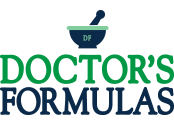Selenium & Total Antioxidant Status
The Total Antioxidant Status,
Serum Selenium Concentrations and the
Ultrasound Assessment Carotid Intima-Media Thickness
in Patients with Arterial Hypertension
Selenium is an essential micronutrient that has a huge impact on human health. It is a component of many enzymes and it plays a key role in the optimization of metabolic reactions and protection against oxidative damage.
In humans, there are 25 genes for selenoproteins, many of which act as enzymes. They are necessary for the proper functioning of the brain, thyroid gland, and immune system, as well as for the preservation of fertility.
One of the aspects of scientific research on the importance of selenium is research determining its impact on the cardiovascular system, including the development and course of arterial hypertension.
The correlation of low blood selenium concentrations with the high blood pressure values in Keshan disease has undoubtedly been proven.
It has been documented that the symptoms of the disease, including cardiac arrhythmias, cardiomyopathy, and arterial hypertension, resolve after selenium supplementation.
Studies conducted so far give contradictory results, some of them have not shown a correlation between blood selenium concentrations and arterial hypertension, while others have shown that such a correlation exists. There is no agreement on the direction of the potential correlation. In several studies, lower blood selenium concentrations in patients with arterial hypertension have been observed but there are also reports of the opposite correlation.
Arterial hypertension is one of the major risk factors for cardiovascular disease. Arterial hypertension can occur on its own, but most often it is accompanied by other abnormalities, such as dyslipidemia and glucose intolerance, which increase its impact on the risk of cardiovascular diseases.
Consideration of the cardiovascular consequences of hypertension enables a more precise assessment of the risk of cardiovascular events.
The subclinical evaluation of organ complications in hypertension focuses on abnormal pulse pressure, left ventricular hypertrophy, renal dysfunction (elevated serum creatinine, elevated albumin/creatinine ratio, microalbuminuria, decreased estimated glomerular filtration rate), and adverse vascular changes such as increased carotid intima-media thickness (cIMT), lowering of the ankle-brachial index (ABI), decreased flow-mediated dilatation (FMD).
According to the recommendations of scientific societies, increased cIMT, like the presence of atherosclerotic plaques in the carotid arteries, is a recognized organ complication of arterial hypertension. cIMT thickening is an early marker of atherosclerosis, which is observed before the formation of atherosclerotic plaque.
The normative range of cIMT is estimated to be within 0.4–0.9 mm, with an increment of about 0.1 mm for each decade of life. Moreover, cIMT assessed by ultrasound has a prognostic significance. cIMT increased by only 0.1 mm significantly increases the risk of myocardial infarction and stroke.
Measurement of cIMT enables the prediction of the occurrence of stroke and myocardial infarction in a manner independent of traditional risk factors and the discussed correlation between cIMT and cardiovascular risk is linear.
In connection with the above-mentioned importance of selenium in the body (also to maintain the redox balance of the system), the postulated role of selenium in the development of hypertension, the importance of cardiovascular consequences of arterial hypertension as predictors of cardiovascular risks, and the diagnostic usefulness of ultrasound assessment of the carotid intima-media thickness, it seems justified to verify the correlation between serum selenium concentrations, the total antioxidant status, and the carotid intima-media thickness in ultrasound assessment in patients with arterial hypertension without other clinically evident cardiovascular diseases.
The objective of the study was to establish the correlation between serum selenium concentrations, the total antioxidant status, and the carotid intima-media thickness in ultrasound assessment in patients with arterial hypertension.
A group of 76 people suffering from arterial hypertension was qualified to participate in the study. The mean age of the respondents was 53.48 ± 12.78. Serum selenium concentrations (Se-S) and total antioxidant status (TAS) were determined in all respondents. Se-S were determined by hydride generation atomic absorption spectroscopy (HGAAS).
The antioxidant status was assessed by the enzyme-linked immunosorbent assay (ELISA). In addition, an ultrasound exam of the carotid arteries was performed, and the intima-media thickness (cIMT) was measured.
In the study group, Se-S and TAS were 89.73 ± 18.99 µg/L and 1.18 ± 0.35 mM. However, the cIMT measured using ultrasound was 0.68 ± 0.15 mm. cIMT was significantly greater in patients with arterial hypertension with Se-S < median in comparison to patients with arterial hypertension with Se-S ≥ median (0.73 ± 0.19 mm vs. 0.65 ± 0.10 mm, p < 0.05), as well as in patients with arterial hypertension with TAS < median than in patients with arterial hypertension with TAS ≥ median (0.79 ± 0.18 mm vs. 0.56 ± 0.13 mm, p < 0.05).
In regression analysis, older age, higher BMI, smoking, and lower serum selenium concentrations were independently correlated with the greater cIMT.
Higher BMI and smoking were independent risk factors for the lower TAS, and the use of ACE inhibitors, β-blockers, and higher Se-S were independent factors of protection against the lower TAS.
In patients with arterial hypertension, the lower total antioxidant status due to lower serum selenium concentrations may be correlated with an increase of the carotid intima-media thickness measured using ultrasound.
Story Source:
Antioxidants 2021, 10(1), 63; https://doi.org/10.3390/antiox10010063 https://www.mdpi.com/2076-3921/10/1/63/htm

